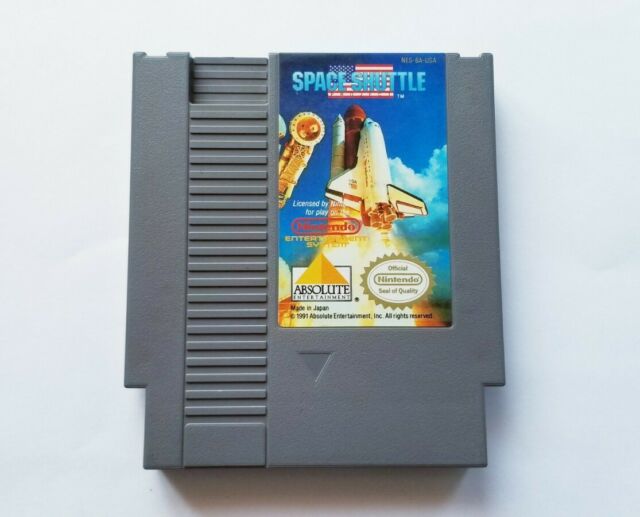Better sims were available.
This (lightly) updated article is adapted from the GoodGamesWriting archives. The original article was posted on May 2, 2011 reflecting 20 years since the game’s launch. We’re dusting off the overview–a dead-link on the game’s Wikipedia page–ahead of its 30th anniversary.
With all the vehicle simulators on PC, both in 1991 and today, we were surprised to find such a game on a console, let alone the NES. That such a game was based on the Space Shuttle was even more surprising. Absolute Entertainment and its development team Imagineering released a mixed bag of simulator games–Battle Tank is widely seen as buggy, Heavy Shreddin’ has serious SkiFree vibes a year before it released–but the Space Shuttle Project on the NES was a clear misfire.
The game starts off with a memory game. You are shown a passcode and your mission shuttle: As numbers tick down, you have to press the button at the right time and match the code. If you fail, you get a newspaper report saying someone tried to break into the launch facility. This is an annoying diversion for a simulator of flying the space shuttle, a brief interlude that feels annoying, to say nothing of it taking away from the 8-bit realism.
It becomes even more unrealistic–a faux pas for the sim genre–as you then have to activate the flow of fuel and oxygen, by yourself, on the elevator that moves up and down alongside the shuttle while dodging the refueling pods that move, battering you around. You then have to get the crew, one at a time, and move them into the shuttle.
All of this is done in the span of less than thirty seconds to launch.
Real shuttle crews spend hours in the cabin preparing before launch with potential scrubs happening up to the moment before launch. It’s all too convenient.
As the shuttle launches a fine animation backed with nice music and some very good speech synthesis takes over the game. All you do at this point is press a button when your arrow meets the bar in the center to roll or drop boosters, or move the control pad to fire or slow down the rockets. You are in no control of the movement other than that, and you never see the shuttle from the inside.
Finally, you are in space, and some mission variation emerges. You’ll start by launching a satellite, a moment that ratchets up the difficulty of the game immensely, all while controlling an astronaut on a Manned Maneuvering Unit (MMU) attempting to launch a satellite by hand.
Apparently every country in the world decided to launch satellites on the same day, because the sky is full of satellites, forcing you to launch it at the very top of the screen, and it must fully deploy its solar panels to be counted. This is easier said than done though, as satellites come along with irregularity, and if it hits yours, you have to try again. It’s enough to make someone want to return to Earth.
Re-entry is a lot like launch in Space Shuttle Project featuring a bare bones control scheme. You land and you’re on to the next mission; oddly enough, if you want to play another mission, you have to do the passcode thing again, a recurring bit that was unnecessary once, but is frustrating when repeated.
The graphics are fine by NES standards and the animation is fluid as well. There are only a few short loops of music but they are nicely composed, neither adding nor detracting from the lackluster game play.
It’s a sim game on console rather than PC. It blends arcade-style flight with a wholly different genre. It confuses the points of interest in space exploration.
All this makes Space Shuttle Project something of a space oddity.
